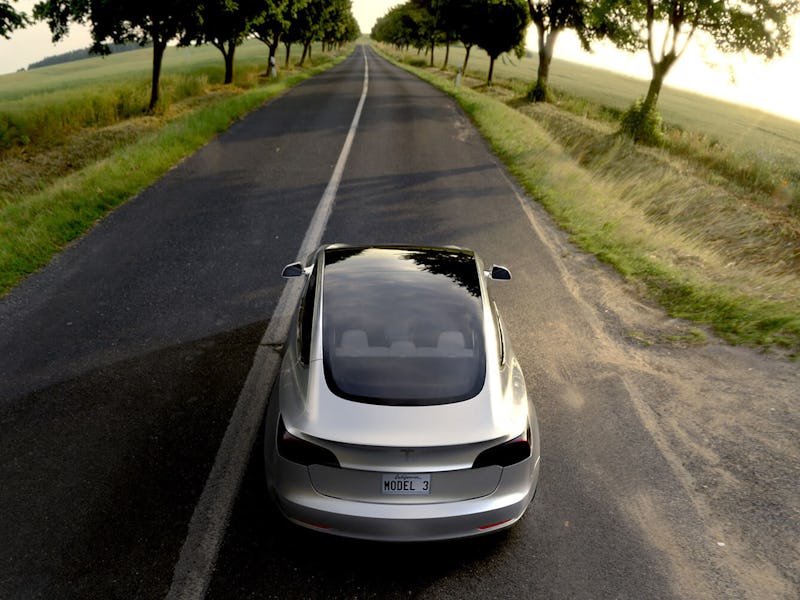On Tuesday, Elon Musk hosted a conference call to inform shareholders about Tesla’s SolarCity acquisition. The call came on the heels of Tesla and SolarCity’s solar roof announcement, in which Musk unveiled Tesla Solar, along with the Tesla Glass Tile, one part of Tesla’s tripartite, unassuming, highly durable solar roofs. In the call, however, the week after the announcement, Musk explained that Tesla had an internal glass production team, and that this so-called Tesla Glass would be an integral part of the Model 3.
“It is using a lot of techniques used in automotive glass business, and — in case it wasn’t obvious with the announcement — Tesla has created a glass technology group, with some really phenomenal people,” Musk said during the call.
When Tesla launched, it hoped to outsource most of its production needs. Now, with the Gigafactory, it’s producing its own batteries; it recently began producing its own autonomous software and hardware in-house. Tesla Glass integrates yet another part of the manufacturing process.
The Tesla Model 3.
At the Model 3 unveiling, we learned many things about the car — but one thing we learned was that the car will be very upgradable. While it starts at just $35,000 before tax incentives, buyers will be able to upgrade just about everything, from the interior to the battery to the roof. From a test drive after the late-March Model 3 event, we learned that buyers will be able to choose between metal, fixed-glass, and panoramic roofs. Until today, we didn’t know that the decision would be more than aesthetic.
Given the lack of information, we must piece together an educated guess about both how and to what end the Model 3 will incorporate Tesla Glass. There are somewhat exciting possibilities, and there are really exciting possibilities.
In the former camp, Tesla Glass could be more lightweight, which would mean better efficiency for the electric vehicles. It could also improve insulation for better temperature control, which would also improve battery life. The Model X’s panoramic windshield and roof were beautiful, but — until Tesla released a sunshade — it made the car, as well as its occupants, overheat. The most likely improvement will be to the glass’s durability. Model X and S owners have complained about their windshield’s chipping and cracking, and — given their complexity and size — Tesla windshield repairs are not cheap. Tesla Glass Tiles, as shown in the video below, are exceptionally durable; if this glass constitutes the Model 3’s windshield, then replacements will rarely be necessary.
Finally, Model 3 owners might be able to tint and de-tint their cars’ glass with a press of a button; six years ago, Musk shared that conference room windows in SpaceX’s headquarters were engineered to go opaque when someone walked into the room.
Two possibilities in the latter camp — the really exciting camp — are that Tesla Glass in the Model 3 will actually power the car, or that it will enable the long-anticipated heads-up display. After the Tesla Solar announcement, Musk tweeted that Tesla Glass Tiles “can also incorporate heating elements, like rear defroster on a car, to clear roof of snow and keep generating energy.” It’s not hard to imagine these capacities also benefiting the Model 3, and the whole “generating energy” part would make an electric vehicle even more attractive. A solar roof for the Model 3 is relatively unlikely, though: Given the limited surface area, it wouldn’t generate much electricity.
The heads-up display (HUD) would arguably be the most likely and most exciting application. We’ve suspected that the Model 3, given that it doesn’t have an instrument panel (and given some other clues), will eventually project speed, charge level, and other metrics on the windshield. HUDs, however, don’t work too well on traditional glass — the projection fails. Tesla Glass could make it possible for an HUD to function.
If past behavior is any indication, Musk probably won’t be able to contain the news for long. We’ll learn the answer to the Tesla Glass–Model 3 mystery before too long.
